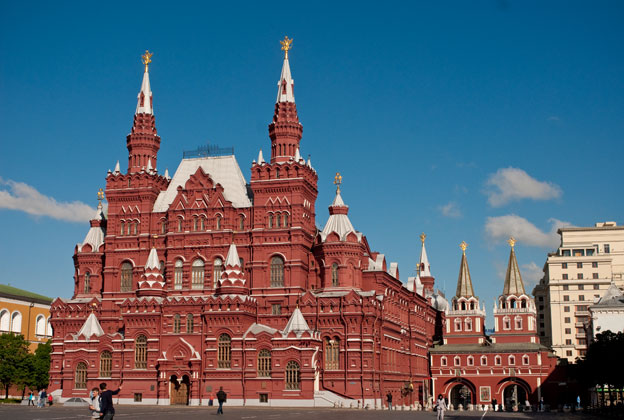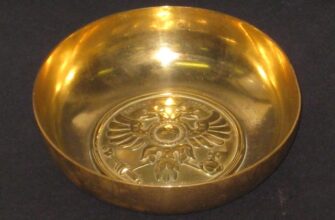According to Russian Ministry of Culture, the State Historical Museum of Russia is in the TOP10 of the most visited museums in the country in 1H 2016. The museum complex includes the History Museum, St. Basil’s Cathedral, the House of the Romanovs and the Museum of the War of 1812.
Maria A. Lemigova, Museum’s Head of public relations, advertising and marketing commented for “E Vesti” the achievements as follows: “We have seen a gradual steady growth in traffic of our museums during last 3 years. Of course, being in the TOP10 of the most visited museums in Russia is justifiable. We are the largest museum in the country, having a rich and diverse collection. We strive first of all to represent wealth of our collection in temporary and permanent exhibitions. We are working actively to promote the museum complex, participate in cultural events organized by the Ministry of Culture and the city authorities.”
The State Historical Museum (SHM) – a national historical museum of Russia. It was founded on February 9, 1872 (the day when the “royal permission” for establishing was received from Emperor Alexander II). The exhibition is represented from prehistoric times to the era of the reign of Alexander II. The building was erected in 1875-1883 on the site of the old Order of the Land, the Moscow University (Moscow State University) was housed there in 1775-1790, and then the City Duma. The facade is designed in “pseudo-Russian style” by drawings of Academic V.O. Sherwood in the interiors participated artists V.M. Vasnetsov, G.I. Siemiradzki, I.K. Aivazovsky, V.A. Serov, S.A. Korovin and I.E. Repin.
“Pseudo-Russian style” – an architectural style, which used the ancient Russian decorative form (XVI-XVII centuries), and their content and purpose discarded.
In the petition to the future Emperor Alexander III for the establishment of the museum colonel N.I. Chepelevsky wrote about an aim “to gather together from all corners of Russian land the cherished shrines of the people, the monuments and documents of Russian state.” The famous Russian archaeologists I.E. Zabelin and Count Alexander Uvarov participated actively in the implementation of this idea. The museum’s collection is filled with gifts of noble families Bobrinsky, Golitsyn, Dashkov, Kropotkin, Masalsky, Obolensky, Olsufyeva, Uvarov, Chertkov, Shcherbatov; merchant families Bakhrushin, Burylin, Vahrameev, Grachev, Postnikov, Sapozhnikov, Shchukin and others. Now the museum’s collection has about 5 million museum objects and more than 14 million pages of documentary materials.
“If we talk about the most popular site of SHM complex, it is St. Basil’s Cathedral on Red Square. If we talk about the Historical Museum, the greatest interest of our visitors is a collection of the Golden Treasury – a special pride of our Museum”, she said. “Our main tourist – Russians, and we are enjoyed by it. There are, of course, most of foreign tourists in St. Basil’s Cathedral.”
St. Basil’s Cathedral – or The Cathedral of intercession of Theotokos on the moat – a symbol of Russia and one of its wonders. It was built in 1554-1557 under Ivan the Terrible in memory of conquest of Kazan; it is a number of churches with a variety of domes. The ensemble was made in a further 150 years. Its mottled appearance the Church acquired later. It is built on the site of the wooden church of the Holy Trinity, where revered Moscow God’s fool Basil was buried in the presence of the King in 1552 – hence the second name. An architect is not known exactly, it’s probably Russian architects Barma and Postnik.
Sources:
Around Moscow. Walking around Moscow and its artistic and educational institutions. Edited by N.A. Geynike, and others, 1917.
Moscow. Architectural Guide. Edited by Busaeva-Davydov I.L. , and others, 1997.
The gray-haired old Moscow. Kondratiev I.K. – M., 1996.
Central Archives of Moscow: Guide to foundations. Issue 3. , State History Museum of Russia, Documents for tour in Moscow State History museum. O. Sheinina.





